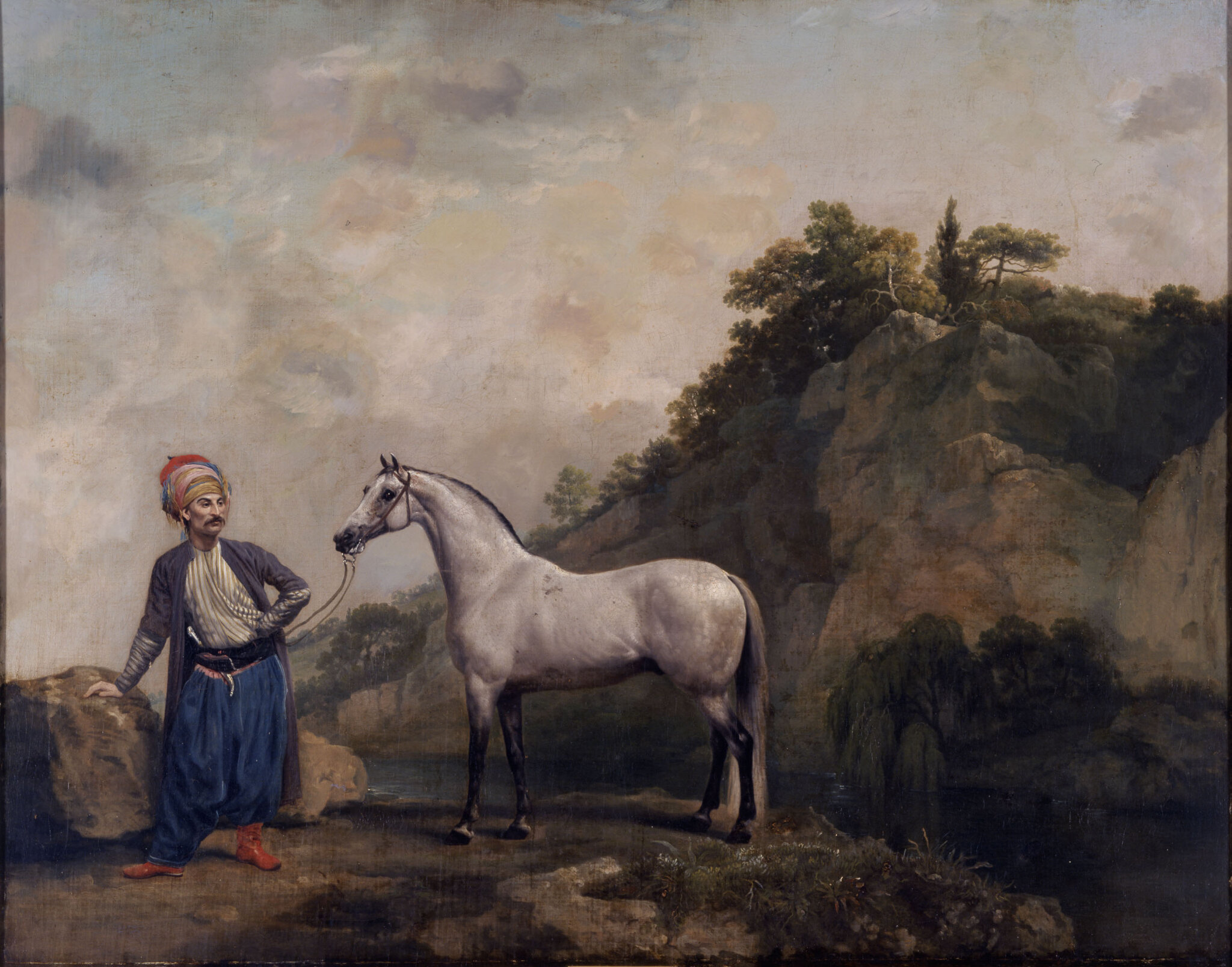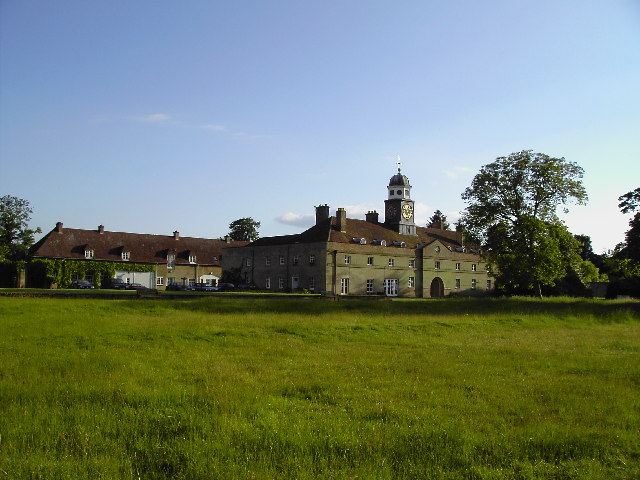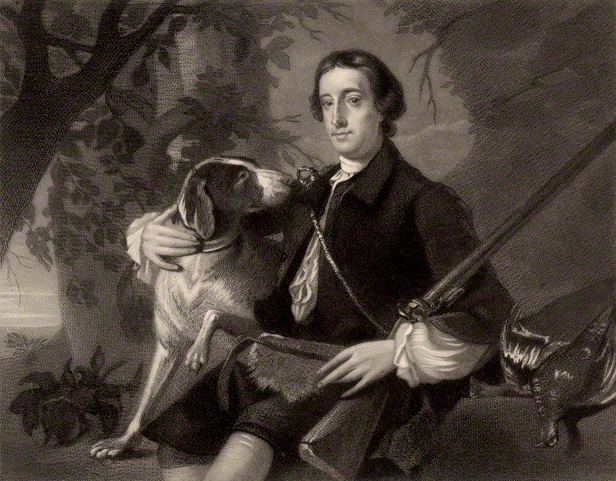|
Aimwell
Aimwell (1782 – after 1786) was a British Thoroughbred racehorse. In a career that lasted from autumn 1784 to spring 1786, he ran eight times and won five races. In 1785, he won the sixth running of the Epsom Derby as well as three races at Newmarket. He was beaten in his only race in 1786, and did not appear in any subsequent records. Background Aimwell, named after a character in ''The Beaux' Stratagem'', was a brown horse bred by William Fortescue, 1st Earl of Clermont, who owned him during his racing career. Unlike all modern Thoroughbreds, which descend in the male line from either the Darley Arabian, the Godolphin Arabian, or the Byerley Turk, Aimwell was descended from a grey stallion usually known as Alcock's Arabian. Although the Alcock Arabian's sireline became extinct, his influence survives as the probable source of the grey colour in the modern Thoroughbred. Aimwell's sire, Mark Anthony, a half-brother to Highflyer, won twenty races at Newmarket for his own ... [...More Info...] [...Related Items...] OR: [Wikipedia] [Google] [Baidu] |
The Beaux' Stratagem
''The Beaux' Stratagem'' is a comedy by George Farquhar, first produced at the Theatre Royal, now the site of Her Majesty's Theatre, in the Haymarket, London, on March 8, 1707. In the play, Archer and Aimwell, two young gentlemen who have fallen on hard times, plan to travel through small towns, entrap young heiresses, steal their money and move on. In the first town, Lichfield, they set their sights on Dorinda. Aimwell falls truly in love, and comedy ensues. Foigard, a priest and chaplain to the French officer, is actually an Irish priest called MacShane (a sombre version of the stage-Irish stereotype). Characters *Archer, a beau, posing as servant to Aimwell *Aimwell, another beau *Count Bellair, a French count *Boniface, a Landlord of an inn *Cherry, his daughter *Lady Bountiful, country woman, specialises in herbal medicine *Dorinda, her daughter *A countrywoman *Squire Sullen, a country block-head, Lady Bountiful's son *Scrub, his servant *Mrs (Kate) Sullen, his unhappy ... [...More Info...] [...Related Items...] OR: [Wikipedia] [Google] [Baidu] |
Alcock's Arabian
Alcock's Arabian (foaled about 1700, died about 1733), also known as Pelham Grey Arabian and less certainly as Bloody Buttocks and Ancaster Turk, among other names, is the ancestor of all grey-coloured Thoroughbred horses,Lady Wentworth, ''The Swift Runner: racing speed through the ages'' (G. Allen & Unwin, 1957), p. 27: "All grey thoroughbreds are descended in direct (though not exclusively male) line from the Grey Alcock Arabian, also known as the Brownlow Turk, Honeywood Arabian and Akaster Turk, the grey colour persisting through some 26 generations..." as well as grey sport and riding horses descended from Thoroughbred lines. Origins and career It was claimed in the 19th century that Sir Robert Sutton (1671–1746), English ambassador to the Ottoman Empire in Constantinople from 1700 to 1717, had acquired horses there, including Alcock's Arabian, the Holderness Turk, and the Brownlow Turk, and had had them shipped to England in 1704. However, there is no evidence that Alco ... [...More Info...] [...Related Items...] OR: [Wikipedia] [Google] [Baidu] |
Godolphin Arabian
The Godolphin Arabian (–1753), also known as the Godolphin Barb, was an Arabian horse who was one of three stallions that founded the modern Thoroughbred (the others were the Darley Arabian and the Byerley Turk). He was named after his best-known owner, Francis Godolphin, 2nd Earl of Godolphin. Origins The Godolphin Arabian was foaled about 1724 in Yemen and moved several times before reaching England. At some early age, he was exported, probably via Syria, to the stud of the bey of Tunis. From there he was given to Louis XV of France in 1730. It is believed he was a present from monarch to monarch. Not valued by his new French owner, it is believed he was used as a carthorse. The horse was then imported from France by Edward Coke and sent to his stud at Longford Hall, Derbyshire, where he remained until the death of his owner in 1733. He was bequeathed to Roger Williams, "proprietor of the St. James's Coffee House", who inherited Coke's stallions. He was bought by the 2nd ... [...More Info...] [...Related Items...] OR: [Wikipedia] [Google] [Baidu] |
William Fortescue, 1st Earl Of Clermont
William Henry Fortescue, 1st Earl of Clermont, KP (5 August 1722 – 30 September 1806), was an Irish peer and politician. Origins He was the eldest son of Thomas Fortescue (1683–1769), a Member of Parliament for Dundalk. His younger brother was James Fortescue, MP and Privy Counsellor. Career He served as High Sheriff of Louth in 1746. He represented Louth in the Irish House of Commons from 1745 to 1760 and subsequently Monaghan Borough from 1761 to 1770. In 1768 he sat briefly as Member of Parliament for Dundalk before opting to sit for Monaghan Borough, for which he had also been elected. He was appointed Governor and Custos Rotulorum of County Monaghan for life in 1775, standing down just before his death in 1806. He was created Earl of Clermont in 1777 and a Knight Founder of the Order of St Patrick on 30 March 1795. He was a francophile and it is believed on that account he selected ''Clermont'' as the name of his earldom.''44 Berkeley Square'', A Commentary by ... [...More Info...] [...Related Items...] OR: [Wikipedia] [Google] [Baidu] |
Epsom Derby
The Derby Stakes, also known as the Epsom Derby or the Derby, and as the Cazoo Derby for sponsorship reasons, is a Group 1 flat horse race in England open to three-year-old colts and fillies. It is run at Epsom Downs Racecourse in Surrey on the first Saturday of June each year, over a distance of one mile, four furlongs and 6 yards (2,420 metres). It was first run in 1780. It is Britain's richest flat horse race, and the most prestigious of the five Classics. It is sometimes referred to as the "Blue Riband" of the turf. The race serves as the middle leg of the historically significant Triple Crown of British horse racing, preceded by the 2000 Guineas and followed by the St Leger, although the feat of winning all three is rarely attempted in the modern era due to changing priorities in racing and breeding, and the demands it places on horses. The name "Derby" (deriving from the sponsorship of the Earl of Derby) has been borrowed many times, notably by the Kentucky D ... [...More Info...] [...Related Items...] OR: [Wikipedia] [Google] [Baidu] |
Highflyer (horse)
Highflyer (1774 – 18 October 1793) was an undefeated Thoroughbred racehorse and a very successful sire of the 18th century.Ahnert, Rainer L. (editor in chief), “Thoroughbred Breeding of the World”, Pozdun Publishing, Germany, 1970 Breeding Bred by Sir Charles Bunbury, the fifth Baronet, the colt was foaled at Great Barton, in 1774. Highflyer's sire was the important Herod, one of the foundation stallions for the classic Thoroughbred, and himself an excellent racehorse and stud, producing Florizel (b.c. 1768) and Woodpecker (ch.c. 1773). His dam, Rachel (1763) was by Blank, and out of a mare by Regulus, both stallions by the Godolphin Arabian, making Rachel inbred 2x3 to the great stallion. Blank also sired Pacolet (1763). Highflyer was a half-brother to Mark Anthony (b c 1767 Spectator) who sired The Derby winner Aimwell. [...More Info...] [...Related Items...] OR: [Wikipedia] [Google] [Baidu] |
Crab (horse)
Crab also known as Old Crab and Mr. Panton's Crab (1722 – December 1750) was a Great Britain, British Thoroughbred racehorse. After retiring from racing he became a successful stallion and was Leading sire in Great Britain and Ireland, British Champion sire in 1748, 1749 and 1750. He was owned by the David Colyear, 1st Earl of Portmore, 1st Earl of Portmore until purchased by Mr. Cotton and then Thomas Panton. Background Crab was a Grey (horse), grey Colt (horse), colt bred by Charles Pelham and was foaled in 1722. He was a son of Alcock's Arabian out of a daughter of Basto (horse), Basto. He was sold to David Colyear, 1st Earl of Portmore when he was young. Although grey was a fairly common color in the foundation stock of the Thoroughbred, it became increasingly rare over time. All modern grey Thoroughbreds descend from Crab through his great-great-granddaughter Bab (foaled 1787) and her great-great-grandson Drone (1823). Racing career Crab first race came in 1727, when he ... [...More Info...] [...Related Items...] OR: [Wikipedia] [Google] [Baidu] |
Tie (draw)
A draw or tie occurs in a competitive sport when the results are identical or inconclusive. Ties or draws are possible in some, but not all, sports and games. Such an outcome, sometimes referred to as deadlock, can also occur in other areas of life such as politics, business, and wherever there are different factions regarding an issue. In some sports, such as cricket, a tie and a draw have different meanings. Terminology The word ''Tie'' is usually used North American English, in North America, whereas the word ''draw'' is usual elsewhere. In cricket, a draw and a tie are two different results. Resolving ties or draws In instances where a winner must be determined, several methods are commonly used. Across various sports: * Some other measure may be used, such as aggregate point difference. * A game may continue on in extra time. To ensure a quick result, some form of sudden death (sport), sudden death rule may apply. * In some sports, a penalty shootout or bowl-out may occur. * ... [...More Info...] [...Related Items...] OR: [Wikipedia] [Google] [Baidu] |
Epsom Downs Racecourse
Epsom Downs is a Grade 1 racecourse on the hills associated with Epsom in Surrey, England which is used for thoroughbred horse racing. The "Downs" referred to in the name are part of the North Downs. The course, which has a crowd capacity of 130,000 when taking into account people watching from the Epsom Downs, an area freely available to the public, is best known for hosting the Derby Stakes, which has come to be widely referred to as The Derby or as the Cazoo Derby for sponsorship reasons, the United Kingdom's premier thoroughbred horse race for three-year-old colts and fillies, over a mile and a half (2400 m). It also hosts the Oaks Stakes (also widely referred to as The Oaks) for three-year-old fillies, and the Coronation Cup for horses aged four years and upwards. All three races are Group 1 races and run over the same course and distance. The Chairman of the course since 2015 is Julia Budd. The course is owned by the Jockey Club. The Queen has attended the Derby most ... [...More Info...] [...Related Items...] OR: [Wikipedia] [Google] [Baidu] |
Match Race
A match race is a race between two competitors, going head-to-head. In sailboat racing it is differentiated from a fleet race, which almost always involves three or more competitors competing against each other, and team racing where teams consisting of 2, 3 or 4 boats compete together in a team race, with their results being combined. In horse racing, it has historically been a format used for one-off events, but in 2009 IMRA, the International Match Race Association was created to enable anyone to enter a one-on-one horse race in all-terrain half-mile loops. Sailing The America's Cup is an international competition in sailing which is broadcast worldwide. There are three single races or the equivalent of three games in most other sports. America’s Cup is a category of sailing called match racing in which two similar boats go head to head in a race or set of races to decide which boat has the better crew competing on board. In sailing there are three main ways of competing in ... [...More Info...] [...Related Items...] OR: [Wikipedia] [Google] [Baidu] |
Sir Charles Bunbury, 6th Baronet
Sir Thomas Charles Bunbury, 6th Baronet (May 1740 – 31 March 1821) was a British politician who sat in the House of Commons between 1761 and 1812. He was the first husband of Lady Sarah Lennox. Bunbury was the eldest son of Reverend Sir William Bunbury, 5th Baronet, Vicar of Mildenhall, Suffolk, and his wife Eleanor, daughter of Vere Graham. The caricaturist Henry Bunbury was his younger brother. He was educated at St Catharine's College, Cambridge. Bunbury was returned to Parliament as one of two representatives for Suffolk in 1761, a seat he held until 1784 and again from 1790 to 1812. He was also High Sheriff of Suffolk in 1788. Bunbury married firstly Lady Sarah, daughter of Charles Lennox, 2nd Duke of Richmond (a grandson of Charles II), and one of the famous Lennox sisters, in 1762. Their notorious marriage, which produced no children (although Sarah gave birth to a daughter by her lover, Lord William Gordon, in 1769), was dissolved by Act of Parliament in 1776 (on th ... [...More Info...] [...Related Items...] OR: [Wikipedia] [Google] [Baidu] |
Herod (horse)
Herod (originally King Herod; April 1758 – 12 May 1780) was a Thoroughbred racehorse. He was one of the three foundation sires of the modern Thoroughbred racehorse, along with Matchem and Eclipse. Herod was the foundation sire responsible for keeping the Byerley Turk sire-line alive.Craig, Dennis, ''Breeding Racehorses from Cluster Mares'', J A Allen, London, 1964 Background Bred by Prince William, Duke of Cumberland, he was by the stallion Tartar, a very good racehorse, who won many races including the King's plate at Litchfield, the King's plate at Guildford, and the King's plate at Newmarket. In addition to Herod, Tartar sired Thais (dam of Silvertail), Fanny (second dam of King Fergus), the O'Kelly Old Tartar mare (dam of Volunteer), and others. Herod's dam, Cypron (1750 bay filly), was bred by Sir W. St Quintin. Herod was a half-brother Lady Bolingbroke (dam of Tetotum, Epsom Oaks) and a mare (1757) (dam of Clay Hall Marske) by Regulus. Description Herod was a fine, bay ... [...More Info...] [...Related Items...] OR: [Wikipedia] [Google] [Baidu] |





